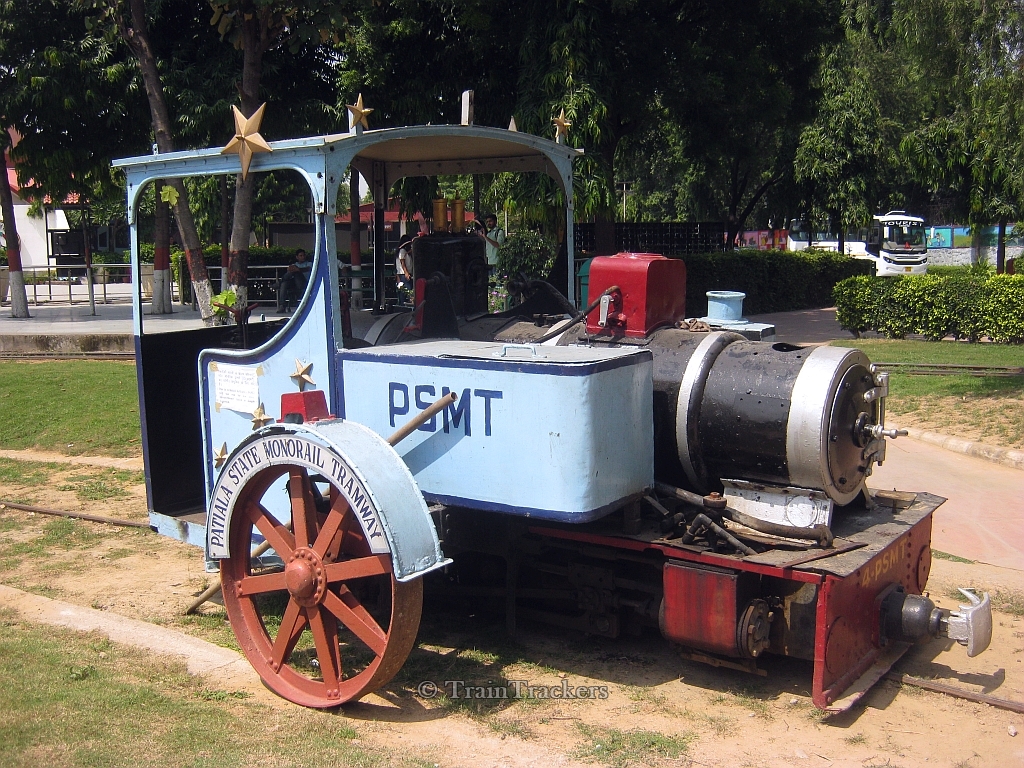
PSMT-4 --- A restored relic of the country's first monorail - built under the rule of Maharaja Sir Bhupinder Singh of Patiala in 1907, PSMT is a unique system that runs on a single axial rail track and on one side is supported by huge wheels running on road surface. It is world's only operational locomotive hauled railway system, built using the Ewing system, where the monorail runs using balancing wheels. As a young engineer in 1900, Colonel C W Bowles was laying the site of the Bengal-Nagpur Railway works at Kharagpur in Bengal. He faced trouble with the narrow gauge contractor tracks and tried, successfully , the Ewing monorail system. In this arrangement, about 95% of the weight of a vehicle is taken on the single rail and the rest on an additional wheel on an outrigger. In later years, Bowles used the same technology for a 24 km monorail line from Sirhind to Morinda. The total distance covered by PSMT was 80 km. The total railway system consists of two unconnected lines constructed by a Bombay based firm - Marsland & Price. One line was from Sirhind to Morinda, a distance of 24 km. It was proposed to extend this line to Ropar but since Ropar was connected by a railway line, this idea was abandoned. And another line was for a distance of 56 km which starts from Patiala to Sunam via Basi which is just 8 km from Sirhind where there was a connection to the North Western Railway.
One of the objectives of the tramway was to put to work more than 500 government-owned mules. But in 1909, four locomotives were built and delivered by Orenstein & Koppel of Berlin, Germany. These locos were an 0-3-0 adaptation of a standard O & K 0-6-0 design, with double-flanged wheels in the centre of each axle. The right-hand water tank was enlarged to shift some of the weight onto the 39-inch (990 mm) diameter road wheel. There were two outside cylinders of 5 inch bore & 14 inch stroke. The fire door was placed on the right side of the fire box rather than at the back. The middle rail wheel was flangeless to allow tight curves to be taken. This wheel was 50 cm (1 ft 8 in) in diameter. The other two double-flanged wheels were had groove depth of 2.15 centimetres (0.85 in). The locomotive wheelbase was 119 centimetres (3 ft 11 in). The Patiala monorail was shelved on 1st Oct 1927 as it began to lose favour with people on the advent of automobiles and improved roads.
Of the four locomotives built by the German company, one is exhibited at the railway workshop in Amritsar and the other two have been lost. NRM managed to acquire locomotive number 4 in the 1970s and it has been exhibited since then. Photographed by Rudranil RoyChowdhury. D.O.P. - 19th September 2018.


